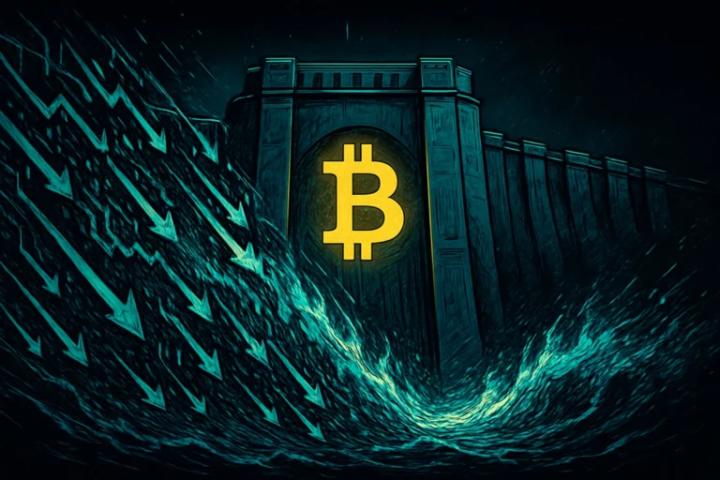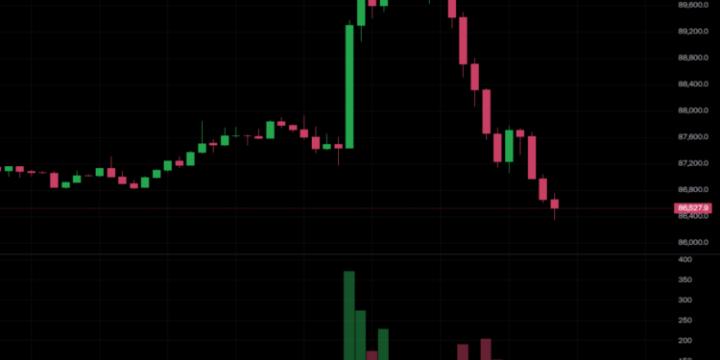Author: Ac-Core, YBB Capital Researcher
I. What story does DeFAI tell
1.1 What is DeFAI
DeFAI is simply and clearly defined as AI+DeFi. The market has been hyped up round after round about AI, from AI computing power to AI Meme, from different technical architectures to different infrastructures. Although the overall market capitalization of AI Agents has generally declined recently, the concept of DeFAI is becoming a new breakthrough trend. The current DeFAI can be broadly divided into three categories: AI abstraction, autonomous DeFi agents, and market analysis and forecasting, with specific subdivisions within these major categories as shown in the figure below.
Source: Created by the author
1.2 How does DeFAI work
In the DeFi system, the core of the AI Agent is the LLM (Large Language Model), and its operation involves multi-level processes and technologies, covering all aspects from data collection to decision execution. According to the research of @3sigma in the IOSG article, most models follow six specific workflows: data collection, model inference, decision making, custody and operation, interoperability, and wallet, which are summarized as follows:
1. Data Collection: The primary task of the AI Agent is to gain a comprehensive understanding of its operating environment. This includes obtaining real-time data from multiple sources:
On-chain data: Obtaining real-time blockchain data such as transaction records, smart contract status, and network activity through indexers and oracles, helping the Agent stay synchronized with market dynamics;
Off-chain data: Obtaining price information, market news, and macroeconomic indicators from external data providers (such as CoinMarketCap and Coingecko) to ensure the Agent's understanding of external market conditions. These data are usually provided to the Agent through API interfaces;
Decentralized data sources: Some Agents may obtain data from decentralized price oracle protocols to ensure the decentralization and credibility of the data.
2. Model Inference: After data collection is complete, the AI Agent enters the inference and computation stage. Here, the Agent relies on multiple AI models to perform complex reasoning and prediction:
Supervised and unsupervised learning: By training on labeled or unlabeled data, AI models can analyze market and governance forum behavior. For example, they can predict future market trends by analyzing historical transaction data, or infer the results of a governance proposal by analyzing governance forum data;
Reinforcement learning: Through a trial-and-error and feedback mechanism, AI models can autonomously optimize their strategies. For example, in token trading, an AI Agent can simulate multiple trading strategies to determine the best buy or sell timing. This learning method allows the Agent to continuously improve under changing market conditions;
Natural Language Processing (NLP): By understanding and processing natural language inputs, Agents can extract key information from governance proposals or market discussions to help users make better decisions. This is particularly important when scanning decentralized governance forums or processing user instructions.
3. Decision Making: Based on the collected data and inference results, the AI Agent enters the decision-making stage. At this stage, the Agent not only needs to analyze the current market situation, but also weigh multiple variables:
Optimization engine: The Agent uses an optimization engine to find the best execution plan under various conditions. For example, when providing liquidity or executing arbitrage strategies, the Agent must consider factors such as slippage, transaction fees, network latency, and capital size to find the optimal execution path;
Multi-agent system collaboration: To deal with complex market conditions, a single Agent may not be able to fully optimize all decisions. In such cases, multiple AI Agents can be deployed, each focusing on different task domains, to improve the overall decision-making efficiency of the system. For example, one Agent may focus on market analysis, while another focuses on executing trading strategies.
4. Custody and Operation: Since AI Agents need to handle a large amount of computation, they usually need to host their models on off-chain servers or distributed computing networks:
Centralized custody: Some AI Agents may rely on centralized cloud computing services like AWS to host their computing and storage needs. This approach helps ensure the efficient operation of the models, but also brings potential centralization risks;
Decentralized custody: To reduce centralization risks, some Agents use decentralized distributed computing networks (such as Akash) and distributed storage solutions (such as Arweave) to host their models and data. These solutions ensure the decentralized operation of the models while providing persistent data storage;
On-chain interaction: Although the models themselves are hosted off-chain, the AI Agents need to interact with on-chain protocols to execute smart contract functions (such as trade execution, liquidity management) and manage assets. This requires secure key management and transaction signing mechanisms, such as MPC (Multi-Party Computation) wallets or smart contract wallets.
5. Interoperability: The key role of AI Agents in the DeFi ecosystem is to seamlessly interact with various DeFi protocols and platforms:
API integration: Agents connect to decentralized exchanges, liquidity pools, and lending protocols through API bridges to exchange data and perform interactive operations. This allows Agents to access real-time market prices, counterparties, lending rates, and make trading decisions accordingly;
Decentralized messaging: To ensure the synchronization of Agents with on-chain protocols, Agents can receive updates through decentralized messaging protocols (such as IPFS or Webhooks). This allows AI Agents to process external events in real-time, such as governance proposal voting results or liquidity pool changes, and adjust their strategies accordingly.
6. Wallet Management: AI Agents must be able to execute actual operations on the blockchain, which depends on their wallet and key management mechanisms:
MPC wallet: Multi-Party Computation (MPC) wallets split the private key among multiple participants, allowing Agents to securely execute transactions without the risk of a single point of failure. For example, Coinbase Replit's wallet demonstrates how to use MPC to achieve secure key management, allowing users to maintain a certain degree of control while delegating some autonomous operations to AI Agents;
TEE (Trusted Execution Environment): Another common key management approach is to use TEE technology, storing private keys in a protected hardware enclave. This allows AI Agents to perform transactions and make decisions in a fully autonomous environment without relying on third-party intervention. However, TEE currently faces issues of hardware centralization and performance overhead, but once these challenges are resolved, fully autonomous AI systems will become possible.
1.3 The Origin of the Doctrine? From Intent to DeFAI
Source: Created by the author
If the vision of DeFAI is: to allow users to autonomously manage their portfolios and easily participate in the crypto market through AI agents and various AI platforms, does this vision naturally lead us to the concept of "Intent"?
Let's revisit the "Intent" concept first proposed by Paradigm. In our normal transactions, we need to specify the exact execution path, like swapping Token A for Token B on Uniswap. But in the intent-driven scenario, the execution path is determined by the solver and AI working together. In other words: Transaction = I specify the execution method of the TX; Intent = I only care about the TX result, not the execution process. From a retrospective perspective, the narrative of DeFAI not only approaches the ultimate vision of AI Agents, but also perfectly catches up with the realization of the Intent vision, seamlessly combining AI and Intent. Comprehensively, DeFAI seems more like a new path added to Intent.
The ultimate version of realizing large-scale blockchain application in the future may be: AI Agent + Solver + Intent-Centric + DeFAI = Future?
II. DeFAI-Related Projects
Source: Author-made
2.1 Griffain
@griffaindotcom $GRIFFAIN: It is an innovative platform that combines AI Agent and Blockchain, which can help users issue AI Agents, focusing on creating a powerful and scalable Decentralized Finance (DeFi) solution, supporting seamless Token swaps, liquidity provision, and ecosystem growth. It can easily manage wallets, trading, and NFTs, and automatically execute Memecoin issuance and airdrops.
2.2 Hey Anon
@HeyAnonai $ANON: It is an AI-driven DeFi protocol that simplifies interactions, aggregates real-time project data, and executes complex operations through natural language processing, providing a convenient DeFi abstraction layer for users. DWF Labs announced support for the DeFAI project Hey Anon through its AI Agent Fund and launched Moonshot on January 14.
2.3 Orbit
@orbitcryptoai $GRIFT: It simplifies complex DeFi interfaces and operations, lowering the participation threshold for ordinary people, currently supporting over 100 blockchains (EVM and Solana) and more than 200 protocols, with the Token GRIFT used to inject vitality into the platform.
2.4 Neur
@neur_sh $NEUR: It is an open-source full-stack application that combines LLM models and blockchain technology functionalities, designed specifically for the Solana ecosystem, using the Solana Agent Kit to achieve seamless protocol interactions.
2.5 Modenetwork
@modenetwork $MODE: It positions itself as the center platform for AI x DeFi innovation on the Ethereum Layer2, where holders can stake MODE to obtain veMODE and enjoy AI Agent airdrops, aiming to become the DeFAI Stack.
2.6 The Hive
@askthehive_ai $BUZZ: Built on Solana, it integrates multiple models including OpenAI, Anthropic, XAI, Gemini, etc., to enable complex DeFi operations such as trading, staking, and lending.
2.7 Bankr
@bankrbot $BNKR: It is an AI-driven cryptocurrency companion, where users can easily buy, sell, swap, place limit orders, and manage wallets by sending a single message, and plans to add Token swapping and on-chain tracking features soon, with the vision of enabling everyone to use DeFi and achieve automated trading.
2.8 HotKeySwap
@HotKeySwap $HOTKEY: It provides an AI-driven DEX aggregator and analytics tool, as well as cross-chain trading capabilities, offering a comprehensive DeFi toolkit.
2.9 Gekko AI
@Gekko_Agent $GEKKO: Created by the Virtuals protocol, it focuses on providing comprehensive automated trading solutions, specifically designed for prediction markets. The GEKKO Token's automated trading strategies include auto-rebalancing, yield harvesting, and creating new Token indices.
2.10 ASYM
@ASYM41b07 $ASYM: It provides an AI-driven DEX aggregator and analytics tool, identifying high-yield investment opportunities and settling the generated profits in $ASYM.
2.11 Wayfinder Foundation
@AIWayfinder $Wayfinder: Launched by the card game chain Parallel, it is an AI-powered multi-chain interaction tool to help Agents navigate the on-chain environment, execute transactions, and interact with decentralized applications.
2.12 Slate
@slate_ceo $Slate: It is a universal AI Agent and Agent connectivity infrastructure layer, translating natural language commands into on-chain operations, focusing on the execution of automated trading strategies, buying or selling under specific conditions, making on-chain operations as simple as thinking.
2.13 Cod3x
@Cod3xOrg $Cod3x: A Solana AI Hackathon project, it provides a no-code development tool to build Agent-automated DeFi strategies, with its Agent interface (Agentic Interface) being a tool that can execute complex operations using only intent expression.
2.14 Almanak
@Almanak__ $Almanak: An AI Agent with self-learning capabilities and the ability to autonomously execute tasks, utilizing agent-based modeling to optimize DeFi and gaming projects, with the mission of using data science and trading knowledge to maximize the profitability of protocols while ensuring their economic security.
2.15 HIERO
@HieroHQ $HTERM: A multi-chain smart tool on the Solana and Base networks, allowing users to use natural language commands for Agents to autonomously complete transactions, including buying and selling Tokens, and performing simple Token analysis.
III. Where Will the AI Agent Ultimately Belong?
Source: Author-made
DeFAI projects have been emerging like mushrooms after the rain. After Bitcoin plummeted below $90,000 on January 13, the next day CoinGecko data showed that DeFAI-related Tokens rose by 38.73%, with $GRIFT, $BUZZ, and $ANON seeing the largest gains. However, the direction of the AI Agent's finance is worth considering, as the current crossroads point to the left for Game and the right for DeFi.
3.1 Towards Game:
M3 (Metaverse Makers _) (@m3org) may be the most promising representative, with a team composed of artists and open-source hacker communities, possibly backed by a16z. However, the biggest practical obstacle for Game is that no truly explosive AI game has emerged in the resource-rich Web2 market. The highly anticipated "Palia" in January 2024 sparked controversy over whether AI design was used, but the CEO ultimately denied this claim. Compared to the right-leaning DeFi, AI Game seems to require more market enthusiasm due to its longer development cycles.
3.2 Towards DeFi:
The project market caps are ranked as $GRIFFAIN, $ANON, $OLAS, $GRIFT, $SPEC, $BUZZ, $RSS3, $SNAI, $GATSBY, with GRIFFAIN and ANON accounting for 37.29% of the total DeFAI market cap.
GRIFFAIN: Built on Solana, it currently leads the DeFAI market cap ranking with $457M and 103,000 Twitter followers. Its core functions include completing directed transactions and fast trading through wallet generation, and users can currently mint The Agent Engine NFT for 0.01 Sol.
Hey Anon: Adopting a multi-chain model, currently supporting Sonic Insider, Solana, EVM, opBNB, etc. The sudden surge of $ANON is entirely driven by the aura of its founder Daniele (@danielesesta), who is also the founder of Wonderland, Abracadabra, and WAGMI. Relying solely on his traffic has already injected a lot of vitality into $ANON, which ranks second with a market cap of $248M.
IV. Conclusion
The emergence of DeFAI is not accidental, as the core characteristics of blockchain are well-suited for strong financial scenarios. Currently, both the left-leaning GameFAI and the right-leaning DeFAI are showing considerable market potential. On the left, the Game direction may see the continuation of the Metaverse, where AI can help manage virtual properties, characters, economies, and more, drawing on the elements of Meme propagation to achieve the self-governance and prosperity of the Metaverse.
On the right, the development of DeFi will inevitably move from the frenzy of emotional speculation to a value-oriented endpoint. The value of AI Agents cannot rely solely on issuing Memes to cater to market trends, but the continuation of the AI Agent story must be supported by DeFi-like yield stacking. The victorious king will not always be clad in armor, and the final result of market competition is worth our anticipation.







